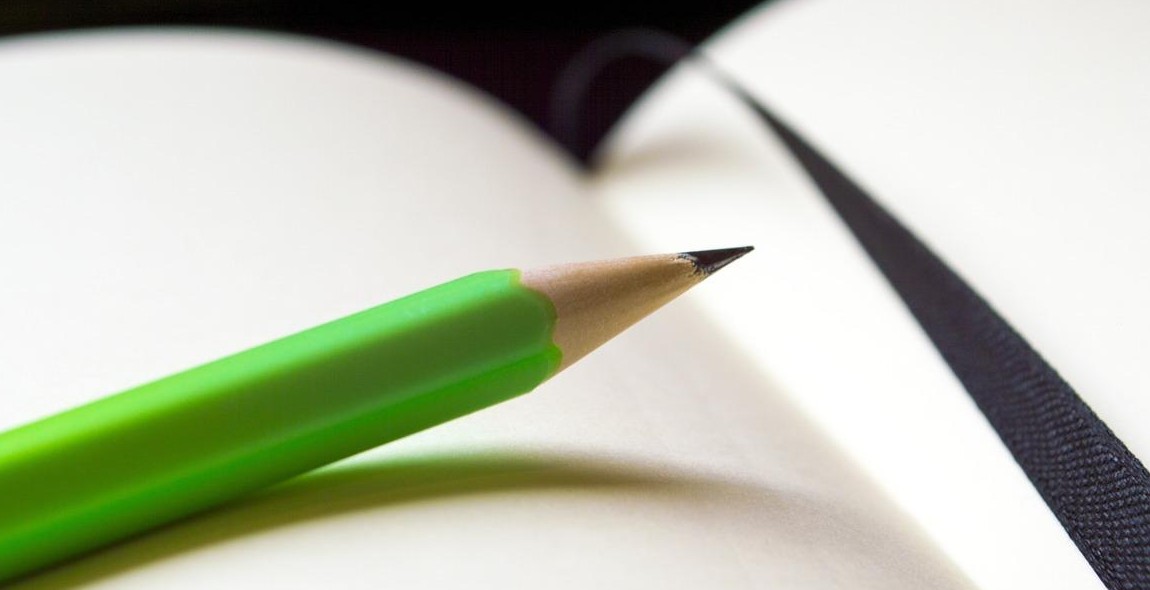How to Write a Poem: Exploring Different Forms and Techniques
Writing a poem can be a deeply personal and rewarding experience. Whether you are an experienced writer or just starting out, there are a variety of forms and techniques you can use to create a unique and powerful piece of poetry. In this article, I will explore different types of poems and provide tips and techniques that you can use to write your own poetry.
Understanding the Basics of Poetry
Poetry is a form of literature that uses language to evoke emotion, paint vivid imagery, and convey complex ideas. While poetry can be written in many different styles and forms, there are some basic elements that are common to most poems:
- Stanzas: A stanza is a group of lines in a poem, similar to a paragraph in prose.
- Rhyme: Rhyme is the repetition of sounds at the end of words, which can create a musical quality to the poem.
- Meter: Meter is the rhythm of a poem, created by the pattern of stressed and unstressed syllables in each line.
- Imagery: Imagery is the use of descriptive language to create vivid mental pictures in the reader’s mind.
By understanding these basic elements, you can begin to explore different forms and techniques to create your own unique poetry.
Why Write Poetry?
Poetry is a powerful medium for personal expression and cultural significance. It allows writers to convey complex emotions and ideas in a concise and impactful way. As a professional writer and content creator, I have found that poetry can be a valuable tool for self-reflection and creative exploration.
Personal Expression
Writing poetry can be a cathartic experience, allowing writers to process their emotions and experiences in a unique and creative way. When writing poetry, there are no rules or limitations, allowing writers to fully express themselves without fear of judgment or criticism.
Through poetry, I have been able to explore my own emotions and experiences, and gain a deeper understanding of myself and the world around me. Whether writing about joy, pain, love, or loss, poetry allows writers to connect with their own feelings and share them with others.
Cultural Significance
Poetry has played an important role in cultures throughout history. From ancient epics to modern spoken word, poetry has been used to tell stories, celebrate traditions, and inspire change.
As a writer, I have found that poetry can be a powerful tool for social and political commentary. Through poetry, writers can address complex issues and challenge societal norms, sparking important conversations and promoting change.
Furthermore, poetry can serve as a bridge between cultures, allowing writers to share their experiences and perspectives with others. By exploring different forms and techniques, writers can create works that are both unique and universal, connecting people across borders and languages.
In conclusion,
Whether for personal expression or cultural significance, writing poetry can be a rewarding and fulfilling experience. By exploring different forms and techniques, writers can discover new ways to express themselves and connect with others.
Different Forms of Poetry
Poetry is an art form that allows writers to express their emotions and ideas in a creative and unique way. There are many different forms of poetry, each with its own set of rules and structures. Here are some of the most popular forms:
Sonnet
A sonnet is a 14-line poem that originated in Italy. It is typically written in iambic pentameter and follows a specific rhyme scheme. The most common rhyme scheme for a sonnet is ABAB CDCD EFEF GG. Sonnets are often used to express love and other intense emotions.
Haiku
Haiku is a traditional Japanese form of poetry that consists of three lines. The first and third lines have five syllables each, while the second line has seven syllables. Haiku often focuses on nature and the changing seasons.
Free Verse
Free verse is a form of poetry that does not follow any set rhyme or meter. Instead, it allows the writer to experiment with different rhythms and sounds. Free verse is often used to express complex emotions and ideas.
Villanelle
A villanelle is a 19-line poem that follows a strict rhyme scheme and repetition pattern. The first and third lines of the first stanza are repeated throughout the poem, and the final stanza includes both of these lines. Villanelles are often used to explore themes of loss or nostalgia.
| Form | Structure | Common Themes |
|---|---|---|
| Sonnet | 14 lines, iambic pentameter, ABAB CDCD EFEF GG rhyme scheme | Love, intense emotions |
| Haiku | Three lines, 5-7-5 syllable structure | Nature, changing seasons |
| Free Verse | No set rhyme or meter | Complex emotions, ideas |
| Villanelle | 19 lines, strict rhyme and repetition pattern | Loss, nostalgia |
Techniques for Writing Poetry
Imagery and Metaphor
One of the most important elements of poetry is imagery and metaphor. These literary techniques help to create vivid and powerful images in the reader’s mind. To use imagery effectively, try to use sensory language that appeals to sight, sound, touch, taste, and smell. Metaphors, on the other hand, are comparisons between two unlike things that help to create a deeper meaning or understanding of a concept or emotion.
Rhyme and Rhythm
Rhyme and rhythm are two other important elements of poetry. Rhyming words can help to create a musical quality to your poem, making it more memorable and enjoyable to read. Rhythm, on the other hand, refers to the pattern of stressed and unstressed syllables in each line of your poem. This pattern helps to create a sense of flow and movement in your writing.
Repetition and Alliteration
Repetition and alliteration are two more literary techniques that can add depth and meaning to your poetry. Repetition involves repeating words or phrases throughout your poem, which can help to emphasize certain ideas or emotions. Alliteration, on the other hand, involves using words that start with the same sound, which can create a musical quality to your writing.
Enjambment
Enjambment refers to the technique of continuing a sentence or thought across multiple lines in a poem. This technique can help to create a sense of movement and fluidity in your writing, and can also help to emphasize certain words or phrases.
| Technique | Description |
|---|---|
| Imagery and Metaphor | Creates vivid and powerful images in the reader’s mind |
| Rhyme and Rhythm | Creates a musical quality to your poem |
| Repetition and Alliteration | Adds depth and meaning to your poetry |
| Enjambment | Creates a sense of movement and fluidity in your writing |
By using these techniques, you can create poetry that is both powerful and memorable. Experiment with different forms and techniques to find the ones that work best for you and your writing style.

Tips for Writing Poetry
Writing poetry can be a challenging but rewarding experience. Here are some tips to help you improve your poetry writing skills:
Read Other Poets
Reading the works of other poets can help you develop your own style and techniques. Find poets whose work you enjoy and read their collections. Pay attention to the language they use, the themes they explore, and the techniques they employ. This can inspire you and give you ideas for your own writing.
Write Regularly
Like any skill, writing poetry requires practice. Set aside time each day or week to write. Even if you don’t feel inspired, write anyway. The more you write, the more you will develop your skills and find your voice.
Experiment with Form and Technique
Don’t be afraid to try different forms and techniques. Play with rhyme, meter, and line length. Try writing in different styles, such as free verse, sonnets, or haikus. Experimenting can help you find what works best for you and your writing.
Edit and Revise
Once you’ve written a poem, take the time to edit and revise it. Read it out loud to yourself and see if the rhythm and flow of the words work. Look for unnecessary words or phrases and try to simplify your language. Don’t be afraid to make changes and revisions until you’re happy with the final product.
| Quick Tips: |
|---|
|
By following these tips, you can improve your poetry writing skills and create works that are meaningful and impactful.

Conclusion
Writing poetry can be a fulfilling and rewarding experience for anyone, regardless of their level of experience. It’s a great way to express thoughts and emotions in a creative and artistic manner. By exploring different forms and techniques, you can enhance your skills and create unique and powerful poems.
Remember the basics
Before you begin writing, it’s important to remember the basics of poetry. Pay attention to rhyme, meter, and structure, and think about the message you want to convey. Use vivid imagery and descriptive language to bring your poem to life.
Experiment with different forms and techniques
Don’t be afraid to experiment with different forms and techniques. Try writing a haiku, sonnet, or free verse poem. Explore different rhyme schemes and meters, and consider using literary devices like metaphor and simile.
Practice, practice, practice
Like any skill, writing poetry takes practice. Set aside time each day to write, and don’t be discouraged if your first few attempts don’t turn out the way you want them to. Keep practicing, and you’ll find that your skills improve over time.
Share your work
Finally, don’t be afraid to share your work with others. Join a writing group or online community, or submit your poems to literary journals or contests. Receiving feedback and constructive criticism can help you grow as a poet and improve your craft.
Remember, writing poetry is a journey, not a destination. Enjoy the process, and let your creativity guide you.
